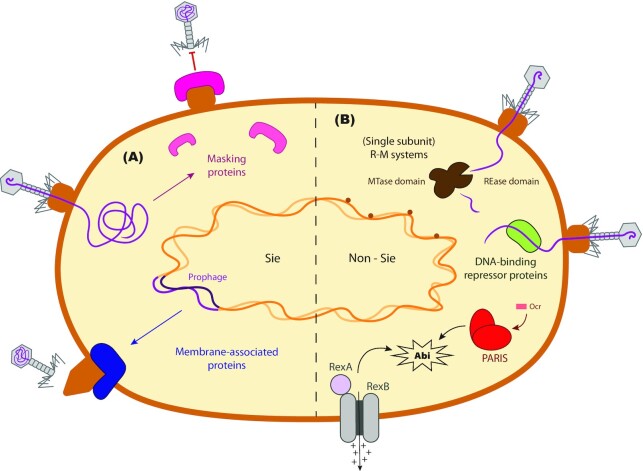Figure 3.
Phage-derived defense systems. (A) Superinfection exclusion systems (Sie) are encoded by phages to prevent other phages from infecting their host. Some phages like T5 produce proteins that mask their receptor and make it inaccessible. Other phages, especially prophages, encode membrane-associated proteins that interact with the phage receptor, blocking the DNA entry channel, triggering a conformational change or inhibiting the invading phage's enzymes. (B) Prophages like Panchino of Mycobacteriumsmegmatis can confer resistance to their hosts through the expression of R-M systems or DNA-binding repressor proteins that target the DNA of newly infecting phages. Other prophage-encoded systems, like RexA-RexB or the newly characterized PARIS, can trigger an Abi response upon sensing an invasion by a new phage.

